Chandrayaan-3: A Triumph of Lunar Exploration and Human Ingenuity!

As a truly global platform, we consistently bring you stories that directly and indirectly influence the lives of aviation professionals worldwide. Chandrayaan-3 is undoubtedly one such event that holds immense significance.
Witnessing a developing nation achieve the remarkable feat of placing a rover on the moon's south pole serves as a beacon of hope for individuals across the globe.
In this blog, we will get into the technlogical intricacies of Chandrayaan-3 while also exploring its potential impact on commercial aviation. There is a wealth of information available on ISRO's website, and we encourage our readers to visit the ISRO website if they still yearn for more knowledge after reading this blog.
"Never stop fighting until you arrive at your destined place - the unique you. Have an aim in life, continuously acquire knowledge, work hard, and have perseverance to realise the great life"
APJ Abdul Kalam
So let's get started!
In a historic feat, India has achieved yet another milestone in space exploration with the successful landing of the Lander Module of ISRO's third lunar mission, Chandrayaan-3. This monumental achievement not only marks India's triumphant journey to the Moon but also positions the nation as the first to accomplish a soft landing near the Moon's enigmatic south pole.
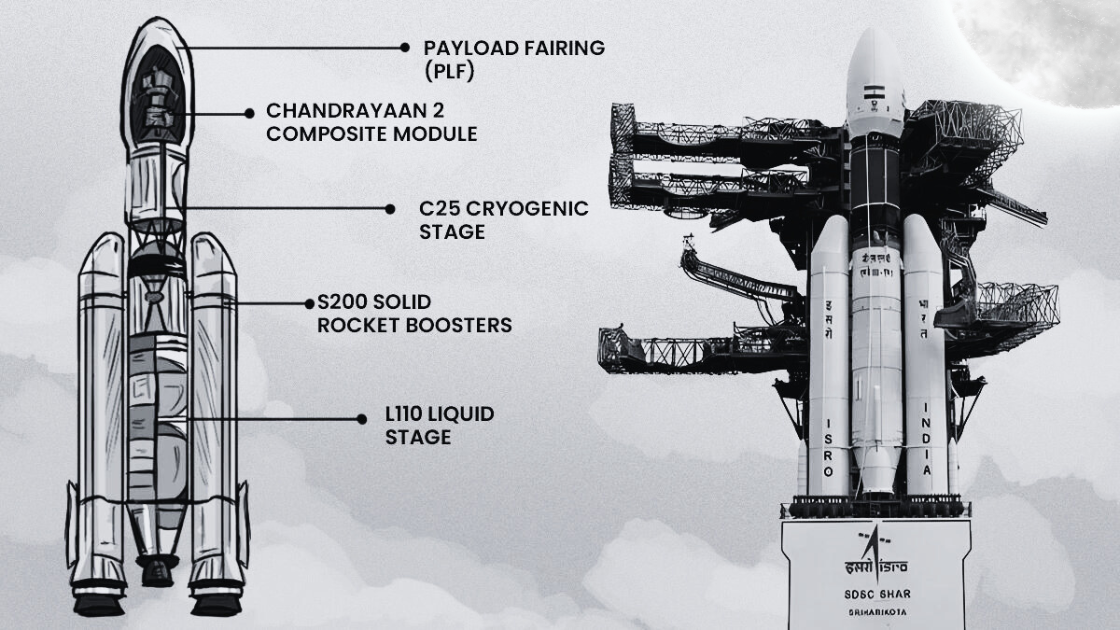
The Indian Space Research Organisation's (ISRO) Chandrayaan-3 mission took flight on July 14, launching with unwavering determination. After a journey of exploration and anticipation, the Lander Module (LM) made its graceful descent to the lunar surface on August 23, solidifying India's position as the fourth country in history, following the footsteps of the erstwhile USSR, the U.S., and China, to achieve a soft landing on the Moon.
This remarkable achievement stands as a testament to India's pursuit of excellence and technological prowess.
Prime Minister Narendra Modi conveyed his heartfelt congratulations to the dedicated team of scientists at ISRO, emphasizing that the success of India's lunar mission resonates beyond borders. He underlined the philosophy of "one earth, one family, one future," which echoes globally, encapsulating the essence of humanity's shared goals.
He asserted that the triumph of the Moon mission embodies this very spirit, emphasizing that this accomplishment belongs not just to India, but to all of humanity.
The historic landing took place with exquisite precision at 6.03 p.m., as the Lander gently touched down on the lunar surface, igniting euphoric celebrations at the Mission Operations Complex (MOX) within ISRO's Telemetry, Tracking, and Command Network (ISTRAC) in Bengaluru. This landmark moment marked the commencement of a new phase in lunar exploration.
With the Lander's successful touchdown, a new chapter unfolded as the Rover was deployed onto the lunar terrain. The Rover, armed with a suite of scientific payloads, is now poised to undertake in-situ chemical analysis of the lunar surface during its designated mission life of one Lunar day, equivalent to 14 Earth days.
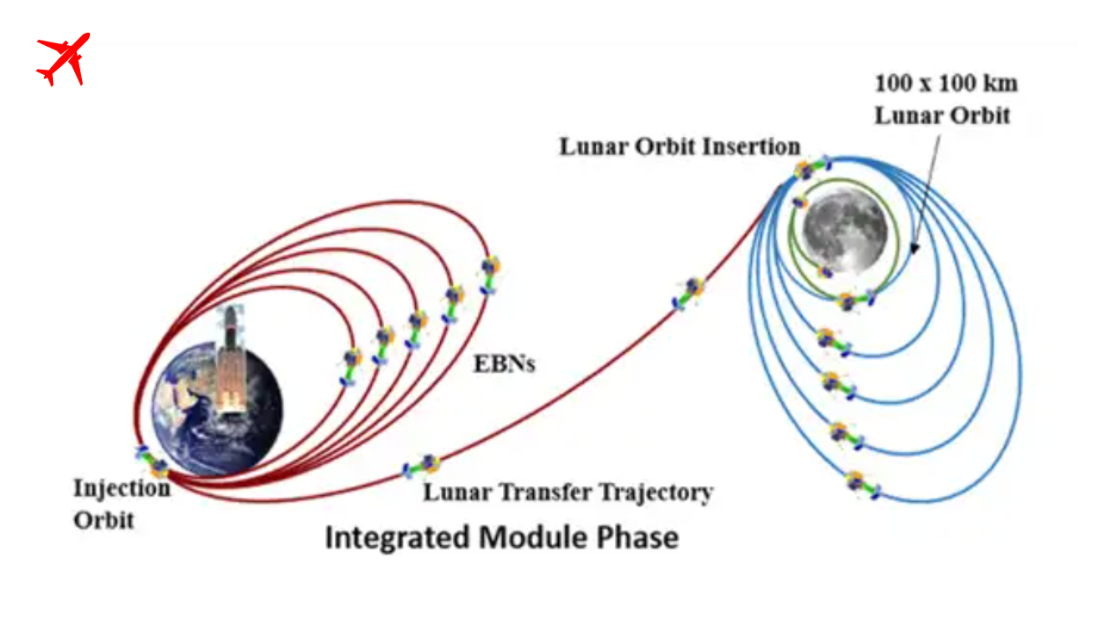
Chandrayaan-3's mission architecture is a harmonious blend of engineering marvels and scientific aspirations. The Lander, borne from indigenous innovation, is equipped to softly land at a predetermined lunar site, further deploying the Rover to conduct meticulous experiments.
A significant highlight of this mission is India's pioneering feat of achieving a soft landing near the Moon's south pole. This unparalleled achievement opens the door to new avenues of lunar exploration, unveiling unprecedented insights into this lesser-explored region of the Moon.
As the global community celebrates this remarkable achievement, the success of Chandrayaan-3 amplifies the spirit of human curiosity and endeavor. It underscores India's commitment to pushing the boundaries of space exploration, thereby fostering a deeper understanding of the cosmos and our place within it.
An interactive mission update is given table below
Chandrayaan-3: A Pinnacle of Lunar Exploration and Technological Achievement
Chandrayaan-3 represents the next evolutionary step in India's determined pursuit of lunar exploration, following in the successful footsteps of its predecessor, Chandrayaan-2.
Beyond being a mere sequel, Chandrayaan-3 is a sophisticated demonstration of India's capacity to achieve end-to-end excellence in lunar landing and roving capabilities.
Below is the detailed specification of Chandrayaan 3 presented in an interactive table:
A Symphony of Engineering and Science
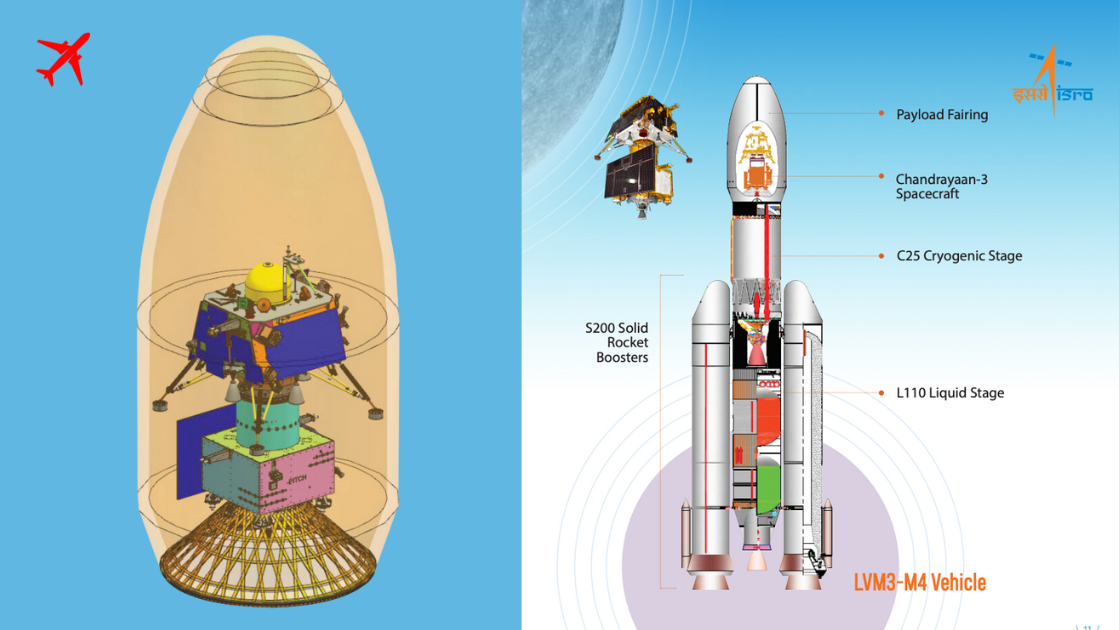
The core essence of Chandrayaan-3 lay in its innovative Lander and Rover configuration. Assembled with precision and finesse, this configuration held the key to unlocking the secrets of the lunar surface.
The mission's launch was orchestrated by the formidable LVM3, lifting off from the Satish Dhawan Space Centre (SDSC) SHAR in Sriharikota. A propulsion module served as the mission's propulsion powerhouse, propelling the Lander and Rover configuration to a pivotal 100 km lunar orbit.
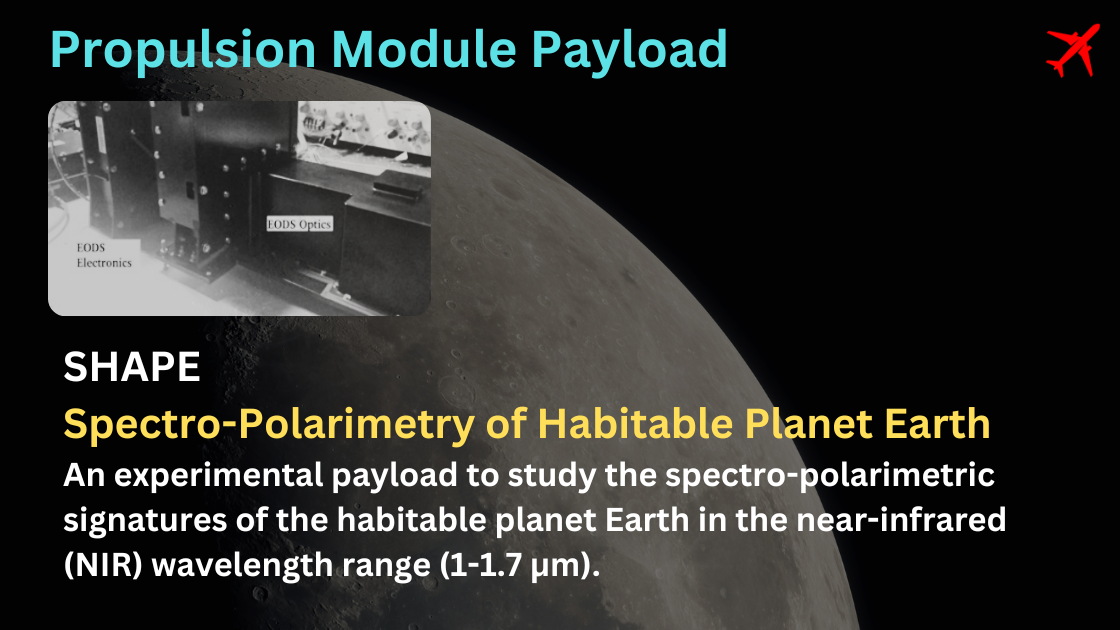
Lander Payloads: Unveiling Lunar Mysteries
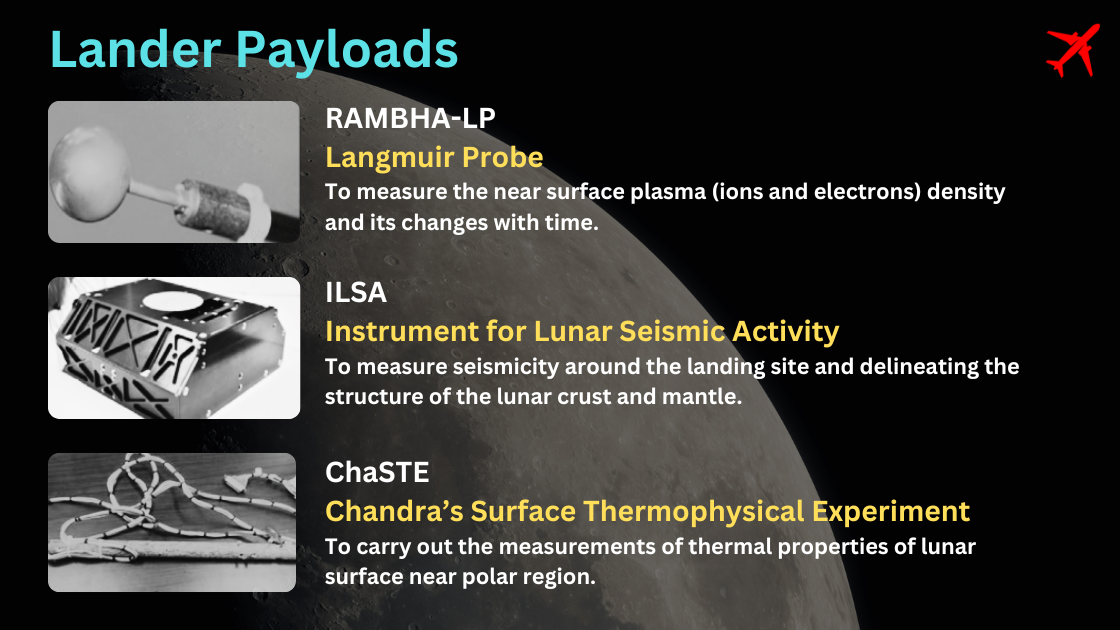
Within the Lander segment of Chandrayaan-3 reside a treasure trove of scientific payloads, each devised to decipher specific facets of the lunar landscape.
Adding an international collaboration, a passive Laser Retroreflector Array, contributed by NASA, is also strategically integrated to facilitate lunar laser ranging studies, advancing our comprehension of lunar distances and geophysical phenomena.
Rover Payloads: Deciphering Elemental Composition
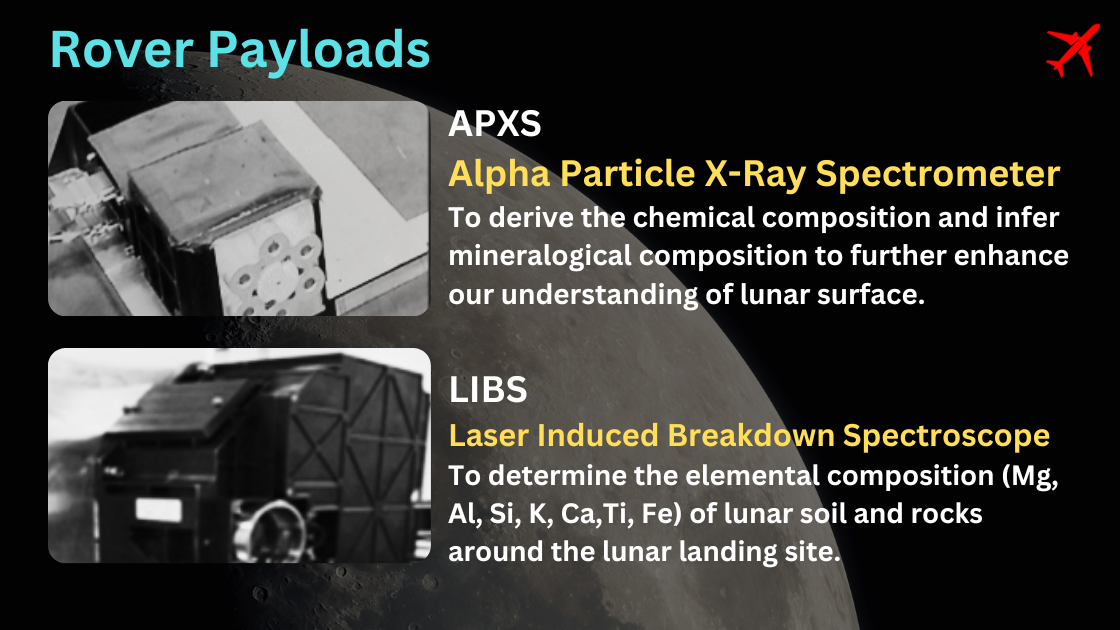
The Rover module of Chandrayaan-3 housed a pair of transformative payloads:
The Alpha Particle X-ray Spectrometer (APXS) and the Laser Induced Breakdown Spectroscope (LIBS). These instruments would collaborate harmoniously to unveil the elemental composition of the vicinity surrounding the landing site.
This dynamic duo hold the promise of unraveling the intricate mysteries of lunar geology and composition, enabling us to peer into the lunar terrain like never before.
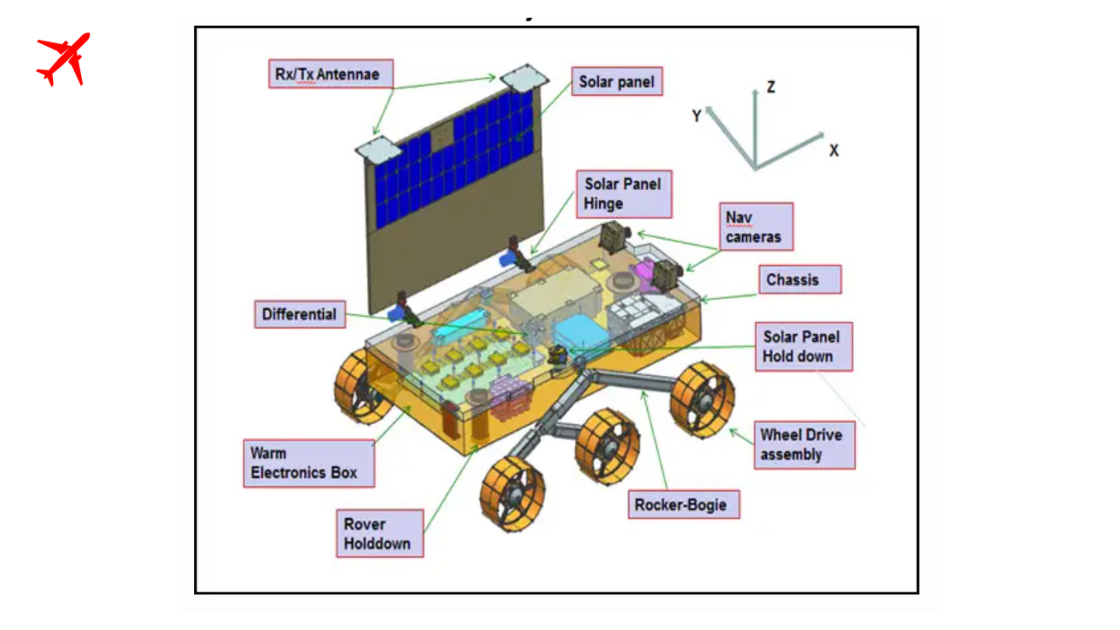
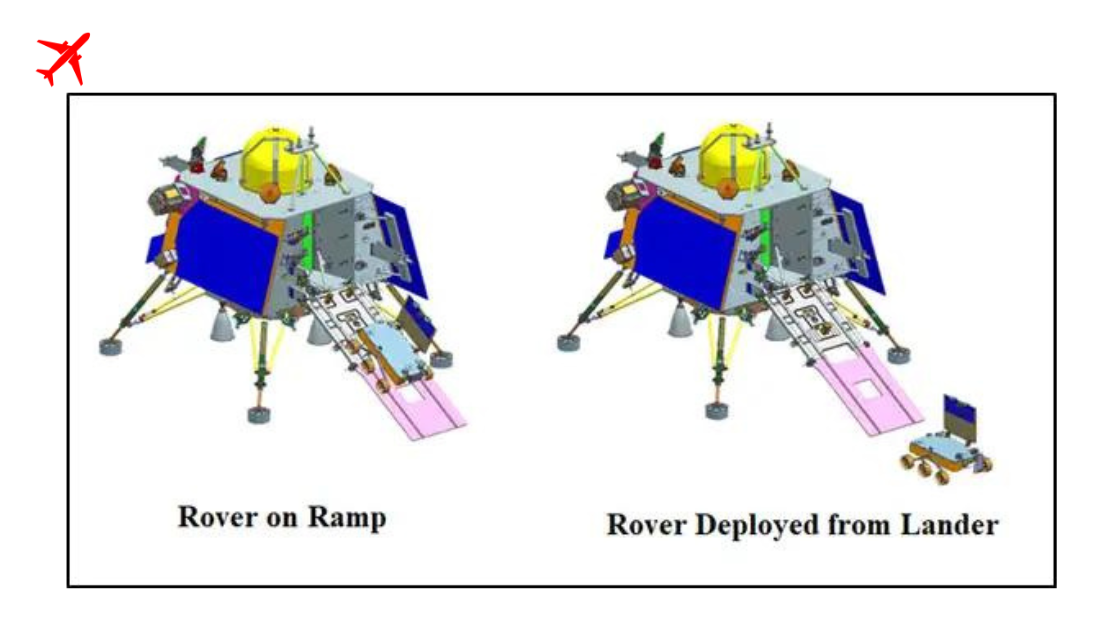
Blueprint for Exploration: Lander, Propulsion, and Rover
Chandrayaan-3 represents a trinity of innovation through its indigenous Lander module (LM), Propulsion module (PM), and Rover. Central to this mission's objectives is the development and demonstration of novel technologies indispensable for interplanetary expeditions.
The Path: The Mission's Bold Objectives
Chandrayaan-3's triumphant journey has three three pivotal objectives(some of them has already been fulfilled)
- Safe and Soft Lunar Landing: The mission seeks to exhibit the capability to achieve secure and gentle landings on the lunar surface, a feat essential for future explorations.
- Roving Across Lunar Terrain: Chandrayaan-3 aims to demonstrate the viability of rover mobility across the rugged lunar landscape, a skill vital for comprehensive lunar exploration.
- In-situ Scientific Exploration: The mission's aspirations extend to conducting intricate in-situ scientific experiments, unearthing the hidden mysteries of the moon's composition and geology.
To accomplish these remarkable objectives, Chandrayaan-3 has been equipped with an arsenal of advanced technologies integrated into the Lander:
- Altimeters: Employing both laser and RF-based altimeters to ensure accurate altitude measurements.
- Velocimeters: Utilizing laser Doppler velocimeter and Lander Horizontal Velocity Camera to gauge velocity variations.
- Inertial Measurement: Integrating laser gyro-based inertial referencing and accelerometer packages for precise measurements.
- Propulsion System: Featuring state-of-the-art 800N throttleable liquid engines, 58N attitude thrusters, and throttleable engine control electronics.
- Navigation, Guidance & Control (NGC): Crafting intricate powered descent trajectory designs and associated software elements for precise control.
- Hazard Detection and Avoidance: Outfitting the Lander with hazard detection and avoidance cameras along with complex processing algorithms.
- Landing Leg Mechanism: Employing an innovative mechanism to ensure a secure and stable landing.
Preludes to the Extraordinary: Rigorous Testing on Earth
Chandrayaan-3 has endured a series of demanding tests simulating lunar conditions and challenges. Among these, the Integrated Cold Test utilizes a helicopter as a test platform to evaluate integrated sensor and navigation performance.
The Integrated Hot Test, conducted with a tower crane as a platform, verifies closed-loop performance by integrating sensors, actuators, and NGC. The Lander Leg Mechanism has undergone rigorous evaluation on a simulated lunar surface, replicating various touchdown scenarios.
Team Behind the Mission
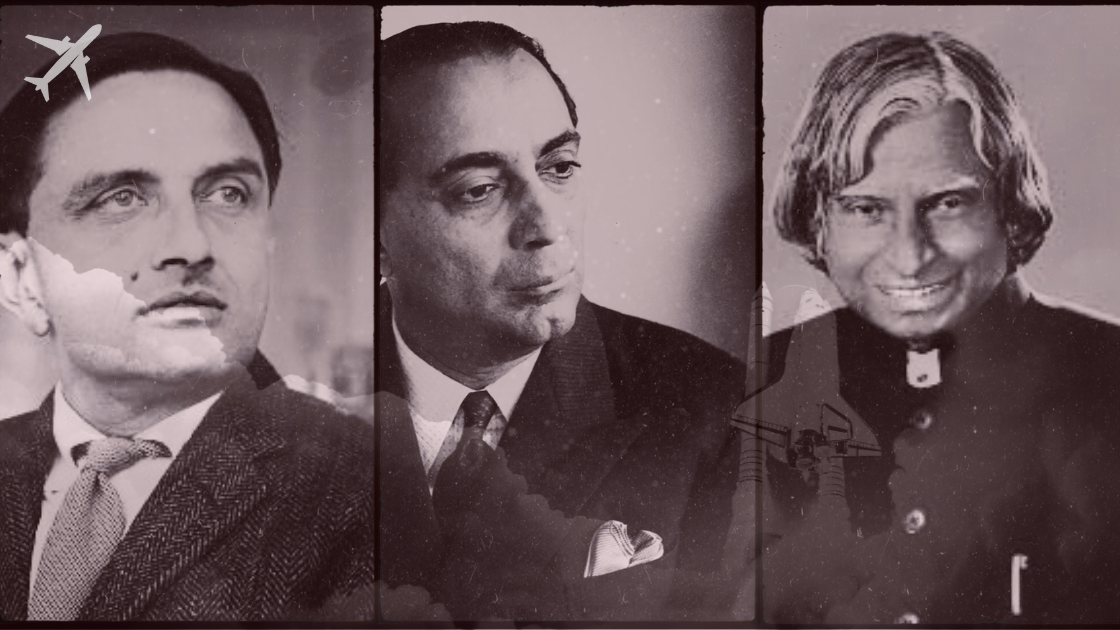
We shoud never forget the dedicated efforts and unwavering commitment of renowned Indian space scientists such as Dr. Vikram Sarabhai, Homi Bhabha, Dr. A.P.J. Abdul Kalam, , Dr. K. Radhakrishnan, Dr. M. Annadurai and many more have been instrumental in propelling India's space program to remarkable heights, culminating in achievements like Chandrayaan-3. Dr. Kalam's pioneering work in missile and rocket technology, Dr. Sarabhai's visionary establishment of ISRO, Dr. Radhakrishnan's leadership during crucial missions, and Dr. Annadurai's guiding hand in lunar exploration collectively reflect their sacrifice and hard work that laid the foundation for Chandrayaan-3's success and India's significant strides in space exploration.
The current team also have been nothing less than extraordinary, given below are some key leadership team members of the mission
Choosing to lead one kind of life means putting aside the desire to pursue other options
Vikram Sarabhai
It's Impact on Commercial Aviation

The success of Chandrayaan-3 holds significant implications for the field of commercial aviation, albeit indirectly. While the Chandrayaan missions are primarily focused on lunar exploration and scientific research, their technological advancements and contributions can potentially have ripple effects in various sectors, including commercial aviation. Here are a few ways in which Chandrayaan-3's success could impact commercial aviation:
- Technological Innovation: The technologies developed for Chandrayaan-3, such as advanced propulsion systems, navigation and guidance systems, and communication technologies, could find applications beyond space missions. These innovations might lead to advancements in aircraft propulsion, navigation, and communication systems, enhancing the efficiency and safety of commercial aviation.
- Materials Science: Space missions often drive the development of new materials that can withstand extreme conditions such as high temperatures, radiation, and vacuum environments. These materials could eventually be adapted for use in aircraft manufacturing, leading to lighter and more durable aircraft structures.
- Remote Sensing and Imaging: Space missions involve advanced remote sensing and imaging technologies for analyzing planetary surfaces. Similar technologies could be repurposed for monitoring weather patterns, terrain mapping, and identifying potential hazards for aviation operations.
- Global Collaborations: The success of space missions like Chandrayaan-3 encourages international collaborations and partnerships. These partnerships can foster the exchange of knowledge, technology, and best practices between space agencies and aerospace industries, potentially benefiting both space exploration and commercial aviation sectors.
- Inspiration and Interest: The achievements of space missions can inspire a new generation of scientists, engineers, and researchers to pursue careers in STEM (Science, Technology, Engineering, and Mathematics) fields. This influx of talent could contribute to advancements not only in space exploration but also in aviation and other technological sectors.
- Infrastructure and Testing: The infrastructure developed for space missions, such as testing facilities, precision manufacturing capabilities, and advanced research centers, could be repurposed for aviation-related research and development, leading to faster innovation in commercial aviation technologies.
- Energy Efficiency: Advances in propulsion systems and energy-efficient technologies developed for space missions can potentially influence the development of greener aviation technologies, contributing to reduced carbon emissions and improved sustainability in commercial aviation.
Be sure not to miss the small quiz based on this blog. Click the button below or look for the quiz icon on the right to test your knowledge!
There's so much more that could be written on this topic, but we'd like to conclude by emphasising that as long as we persevere, anything is achievable, and it's evident that the sky is not the limit. To the up, above and beyond, cheers!
We sincerely hope you enjoyed this blog, and we encourage you to subscribe to AviationX for All Things Aviation!
Take a look at ISRO brochure of the mission for more details by clicking the button down below
Keep Smiling, Keep Reading!
Keep Flying High!
Generated with love, support & assistance of AI